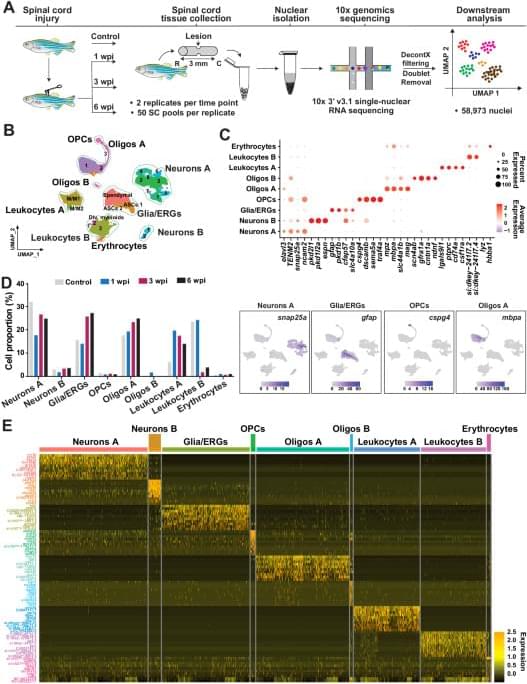The 2024 Kavli Prize in Nanoscience is awarded to three nanomedicine pioneers who laid the foundation of controlled release, biomedical imaging and diagnostics.
Get the latest international news and world events from around the world.
Fully 3D-printed shape memory mini-actuators can move small soft robots
Researchers from North Carolina State University have demonstrated miniature soft hydraulic actuators that can be used to control the deformation and motion of soft robots that are less than a millimeter thick. The researchers have also demonstrated that this technique works with shape memory materials, allowing users to repeatedly lock the soft robots into a desired shape and return to the original shape as needed.
“Soft robotics holds promise for many applications, but it is challenging to design the actuators that drive the motion of soft robots on a small scale,” says Jie Yin, corresponding author of a paper on the work (Advanced Materials, “Fully 3D-Printed Miniature Soft Hydraulic Actuators with Shape Memory Effect for Morphing and Manipulation”) and an associate professor of mechanical and aerospace engineering at NC State. “Our approach makes use of commercially available multi-material 3D printing technologies and shape memory polymers to create soft actuators on a microscale that allow us to control very small soft robots, which allows for exceptional control and delicacy.”
The new technique relies on creating soft robots that consist of two layers. The first layer is a flexible polymer that is created using 3D printing technologies and incorporates a pattern of microfluidic channels – essentially very small tubes running through the material. The second layer is a flexible shape memory polymer. Altogether, the soft robot is only 0.8 millimeters thick.
Animal brain inspired AI game changer for autonomous robots
A team of researchers at Delft University of Technology has developed a drone that flies autonomously using neuromorphic image processing and control based on the workings of animal brains. Animal brains use less data and energy compared to current deep neural networks running on GPUs (graphic chips). Neuromorphic processors are therefore very suitable for small drones because they don’t need heavy and large hardware and batteries.
The results are extraordinary: during flight the drone’s deep neural network processes data up to 64 times faster and consumes three times less energy than when running on a GPU. Further developments of this technology may enable the leap for drones to become as small, agile, and smart as flying insects or birds.
Photo of the “neuromorphic drone” flying over a flower pattern. It illustrates the visual inputs the drone receives from the neuromorphic camera in the corners. Red indicates pixels getting darker, green indicates pixels getting brighter. (Image: TU Delft)

Natasha Vita-More — What Makes Personal Identity Continue?
If you enjoy our content, make a tax-deductible donation of any amount to help us keep videos like this one free from paywalls: https://shorturl.at/JN4Ty.
Personal identity seems so strong. We have the same sense of ourselves throughout our lives, even though everything about our physical bodies and brains is changing constantly. What then causes the continuity of personal identity? Where does transhumanism fit in? Some say personal identity is an illusion, but that seems like cheating. Others credit a nonphysical soul. That seems as though it’s cheating too.
Show your support of the show with Closer To Truth merch like T-shirts, hoodies, and more: https://bit.ly/3P2ogje.
Natasha Vita-More is a faculty member in design, media arts, and theory at the University of Advancing Technology. She is a strategic designer in the area of human enhancement and life extension. Her interests are located within the ethical uses of science and technology and socio-political implications of revolutionary advances impacting humanity’s future.
Follow Closer To Truth on X (Twitter) for announcements, updates, and more: https://x.com/CloserToTruth.
Closer To Truth, hosted by Robert Lawrence Kuhn and directed by Peter Getzels, presents the world’s greatest thinkers exploring humanity’s deepest questions. Discover fundamental issues of existence. Engage new and diverse ways of thinking. Appreciate intense debates. Share your own opinions. Seek your own answers.

Scientists propose theory to resolve time travel paradox and make time travel possible
A new theory suggests time travel might be possible without creating paradoxes.
TL;DR:
A physics student from the University of Queensland, Germain Tobar, has developed a groundbreaking theory that could make time travel possible without creating paradoxes. Tobar’s calculations suggest that space-time can adjust itself to avoid inconsistencies, meaning that even if a time traveler were to change the past, the universe would correct itself to prevent any disruptions to the timeline. This theory offers a new perspective on time loops and free will, aligning with Einstein’s predictions. While the math is sound, actual time travel remains a distant possibility.

Largest animal genome sequenced — and just 1 chromosome is the size of the entire human genome
Scientists have sequenced the largest known animal genome — and it’s 30 times bigger than the human genome.
The genome belongs to the South American lungfish (Lepidosiren paradoxa), a primeval, air-breathing fish that “hops” onto land from the water using weird, limb-like fins. The fish’s DNA code expanded dramatically over the past 100 million years of evolutionary history, racking up the equivalent of one human genome every 10 million years, researchers found.



How Probiotics cured cancer, and saved lives after Chernobyl
During the Cold War Era of the 1960s, Russian researchers were looking for ways to support the immune system in conditions running the gamut from cancer to bio-warfare agents. Eastern Europeans, with a cultural love of fermented milk products, logically looked to probiotics, or lactobacillus, for immune support because it was safe, cheap and effective.
A Bulgarian researcher and medical doctor, Dr. Ivan Bogdanov, researched lactobacillus bacteria in the 1960s. Bogdanov believed that specific strains of probiotics could have anti-tumor properties.
The doctor’s research team injected mice with a sarcoma cancer, then administered a crude mixture of cell fragments from a strain of Lactobacillus delbrukii. Bogdanov observed that the cancer disappeared within a few days. Subsequently, researchers attempted to re-grow cancer in the same mice, but without success — the mice seemed immune to the cancer cells.